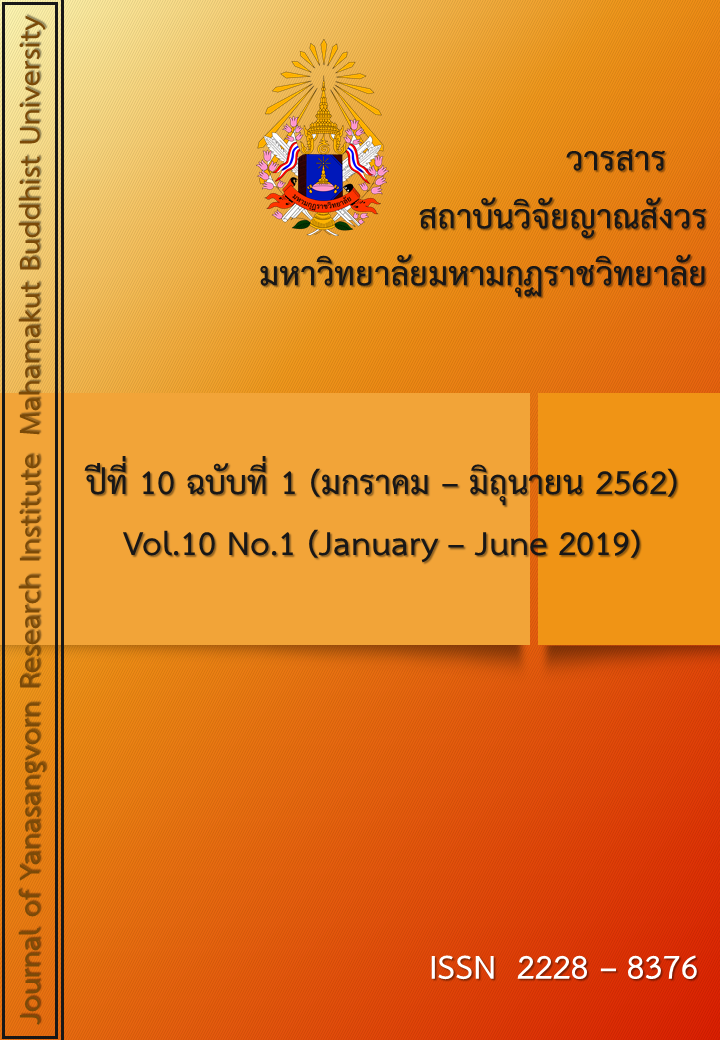PREDICTIVE FACTORS THAT INFLUENCE DEPRESSION AMONGST SIRINDHORN COLLEGE OF PUBLIC HEALTH SUPHANBURI
Main Article Content
Abstract
The purpose of this research was to study the prevalence and to find factors to predict depression of students. Sirindhorn Public Health College Suphanburi Province Use a descriptive cross-sectional survey model to determine the sample by using the G * power program by determining the F-test family test. Statistical testing using linear multiple regression: Fixed model, R2 deviation from zero Determine the size, influence (effect size) equal to 0.15. The probability of the error in the first category test () equals .05 The test power () is equal to .95 and the number of variables in the forecast is 4. One Equal to 129 people using systematic sampling method. The instrument used as a questionnaire And depression assessment statistics using Multiple Regression Analysis using Stepwise method The research found that Tuckiness and depression Of the students of Sirindhorn Public Health College Suphanburi Province, 129 people, 33 women with depression accounted for 34.5% of the year. The year with the most depression is The first year students, 14 people, representing 15.3 percent, with the most problems with depression 25 dental students, 20.8%, whose parents are farmers There were 16 depression problems, 16.0 percent, and marital status of divorced parents with 8 depression problems, representing 5.2 percent. The results showed that Prediction of student depression Sirindhorn Public Health College Suphanburi Province There are 3 variables that affect the predictions of depression consisting of family functions. Bond with friends and self-esteem by such variables Can create predictive equations as follows Equations in the raw score Y/ = 2.177 + 0.013 (X1) – 0.022 (X2) – 0.371 (X3) Equations in the standard score ZY = 0.015Z Family functions – 0.038Z Bond with friends – 0.512Z Self-esteem Keywords: 1 Predictive Factors 2. Depression
Article Details
References
อุ่นจิตร คุณารักษ์. (2556). ผลการปรับความคิดทางโทรศัพท์ร่วมกับจิตบำบัดรายบุคคลในผู้ป่วยโรค ซึมเศร้า. วารสารสุขภาพจิตแห่งประเทศไทย, 21(2), 88-97.
Anderson, R. J., Goddard, L., & Powell, J. H. (2011). Social problem-solving and depressive symptom vulnerability: The importance of real-life problem-solving performance. Cognitive Therapy and Research, 35(1), 48-56.
Beck, J. S. (2011). Cognitive therapy: Basics and beyond (2nd ed.). New York: Guilford
World Health Organization. (2015). Fact sheet N°369. Retrieved November 26, 2015, from http://www.who.int/mediacentre/ factsheets/fs369/en/
Jacobs, R. H., Reinecke, M. A., Gollan, J. K., & Kane, P. (2008). Empirical evidence of cognitive vulnerability for depression among children and adolescents: A cognitive science and developmental perspective. Clinical psychology review, 28(5), 759-782.
Sadlo, M. (2005). Effects of Communication Mode on Connectedness and Subjective Well-Being (Doctoral dissertation, Thesis, Australian Center of Quality of life).
Thanoi, W., Phancharoenworakul, K., Thompson, E. A., Panitrat, R., & Nityasuddhi, D. (2010). Thai Adolescent Suicide Risk Behaviors: Testing a Model of Negative Life Events, Rumination, Emotional Distress, Resilience and Social Support. Pacific Rim International Journal of Nursing Research, 14(3).
Townsend, M. C., & Morgan, K. I. (2017). Psychiatric mental health nursing: Concepts of care in evidence-based practice. FA Davis.
Pine, D. S., Cohen, E., Cohen, P., & Brook, J. (1999). Adolescent depressive symptoms as predictors of adult depression: moodiness or mood disorder?. American Journal of Psychiatry, 156(1), 133-135.
Reangsing, C. (2011). Predictive factors influence depression among secondary school students, regional education office, Chiang Rai province. Thai Journal of Nursing Council, 26(2), 42-56.
Song, S. J., Ziegler, R., Arsenault, L., Fried, L. E., & Hacker, K. (2011). Asian student depression in American high schools: Differences in risk factors. The Journal of School Nursing, 27(6), 455-462.
Swartz, J. R., Hariri, A. R., & Williamson, D. E. (2017). An epigenetic mechanism links socioeconomic status to changes in depression-related brain function in high-risk adolescents. Molecular psychiatry, 22(2), 209.
Uddin, M., Jansen, S., & Telzer, E. H. (2017). Adolescent depression linked to socioeconomic status? Molecular approaches for revealing premorbid risk factors. BioEssays, 39(3), 1-7.
Vatanasin, D., Thapinta, D., Thompson, E.A., & Thungjaroenkul, P. (2012). Testing a model of depression among Thai adolescents. Journal of Child and Adolescent Psychiatric Nursing, 25, 195-206.


